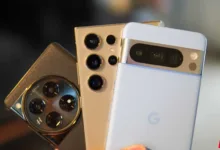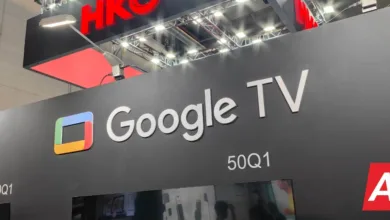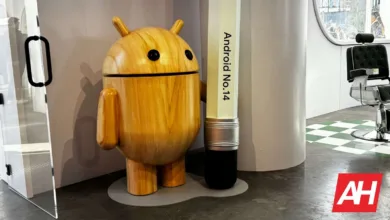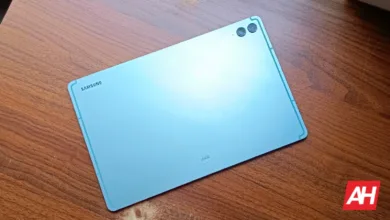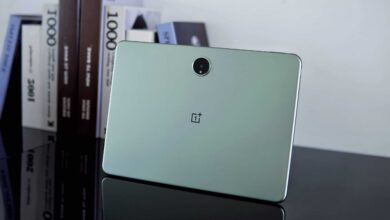Everything You Need To Know
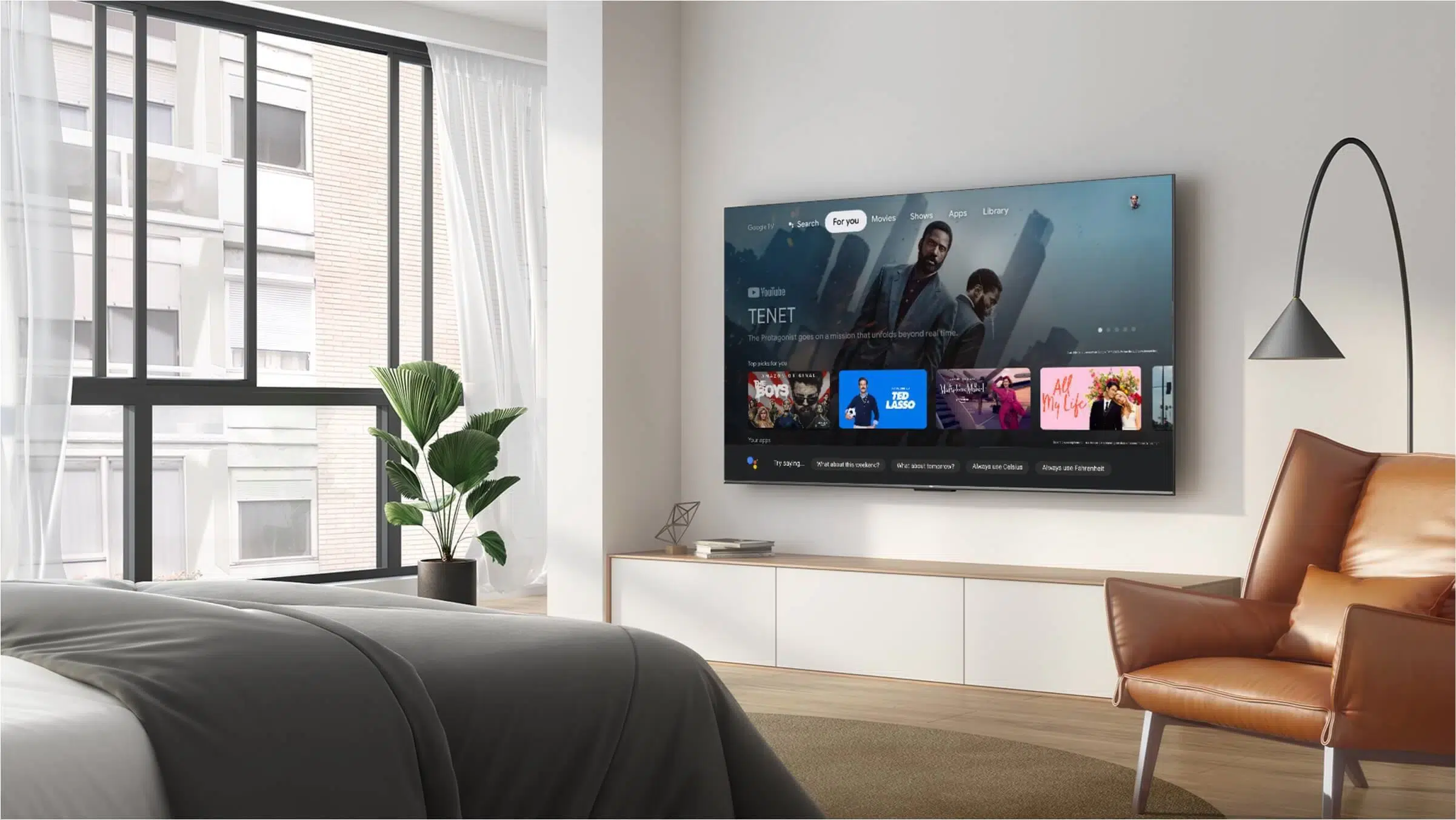
What is Android TV? In simple terms, it’s Android for your TV. It first launched in 2014 as a sort of replacement for Google TV even though Google TV has now been reborn as an extension and possibly replacement for Android TV.
TV operating systems have gone through a significant transition over the last few years. There are still a number of companies using proprietary software, including Samsung and LG. However, a number of TV manufacturers are now opting to employ the help of a third-party operating system.
Android TV is one of those options. One that’s provided by Google. Which is now beginning to transition into Google TV.
Is Android TV the same as Android mobile?
This is an app-based platform. In that sense, it is very similar to the version of Android running on your smartphone.
Android TV users can download and install apps directly from the Google Play Store just like they do on their smartphones. Although not all mobile apps are available for the TV the reason is the user experience.

Android TV 14
Google announced Android TV 14 at its developer conference in 2024. The company does not keep the version of Android in sync from phones to TVs and even to wearables. In fact Android TV 13 launched in 2022. With TVs, they don’t get new versions of Android all that often, mainly because it’s pretty difficult to update all of them at the same time.
So what’s new with Android TV 14?
- New Energy Modes: Android TV 14 is going to put users in control and help to reduce a TV’s standby power consumption. This includes things like a low-energy mode that will turn off the network connection when the TV or projector is not in use. There’s also an optimized energy mode that allows the TV to be awakened by things like casting from a device. And finally an Increased energy mode that will provide a more robust network feature set and will be more useful for those that use Google Home as their smart home platform of choice.
- Better Performance: Google is announcing that Android TV will have a “snappier, more responsive TV experience”, which is a nice improvement for Android TV, given how slow it can be on TVs. Especially TVs that have it built-in.
- Picture-in-Picture: PiP will be available for TVs that are able to run it, starting in Android 14. This is going to allow app developers to work with the feature in their TV apps.
- Accessibility features: Of course, there’s a load of new accessibility features coming to Android 14 too. This includes color correction, enhanced text options, and improved navigation. These features can also be enabled or switched off using shortcut buttons on the TV’s remote control.
Android TV 14 is currently available in beta, and you can try out the emulator from the Android Developers website. Unfortunately, you cannot install it on any hardware just yet.
Android TV 13
At Google I/O in 2022, Android TV 13 was announced. It is not a huge upgrade to Android TV, with really only one user-facing feature being added. Basically, it is improving picture-in-picture, a feature it has had for years. Now, it will work better with other apps. Specifically with video chatting apps like Zoom and Google Meet. So you can keep the video going in the corner while you’re watching TV.
Google is also using new APIs that will help apps work better with actual TV hardware. There’s an “AudioManager” API that will allow apps to better anticipate where audio is heading and what playback modes are available. There’s also the “MediaSession” API which allows for Android TV apps to better react to HDMI state changes to pause content or save power.
For accessibility, Android TV 13 is bringing new keyboard layouts for the InputDevice API. This is an API that allows for physical keyboards to better work with Android TV apps. That should be helpful for game developers, specifically. There is also a new system-wide selection that enables audio descriptions across all apps too.
Android TV 14 has not yet launched. Android TV does not follow the same update schedule as mobile Android, seeing as TVs don’t see as many changes, and manufacturers are much slower to update TVs versus phones. However, Google TV has launched with Android 14 already, giving us more reason to think that Android TV itself might be going away in the future.
What is Google TV?
In late 2020, Google debuted the new Chromecast with Google TV, which was the first time that we saw Google TV launch on a device in almost a decade. Google TV was Google’s original entry into the living room space around 2010. Then it was rebranded as Android TV.
Now, Google TV is back, and it is essentially an interface that lives on top of Android TV. In short, it makes it easier to find content to watch on the big screen, with great recommendations across the board for the apps that you have installed.
Google TV still runs on Android TV and is starting to roll out to more devices. But as of right now, it’s only available on the new Chromecast. Sony and other manufacturers have already stated that they will be bringing Google TV on their new TVs and updating their older TVs with it, too.
Are all Android apps available on Android TV?
TVs are not typically designed with touch controls in mind. Unlike your smartphone, there are no swipes, taps, or gestures in use. Instead, TVs mostly rely on the use of a remote control.
Android mobile apps are built from the ground up with touch controls in mind. If those apps were made available on a TV as-is, users would find it difficult to navigate the app. In some cases, impossible.
Due to this, TV apps have to be optimized by developers before becoming available on a platform like Android TV. Optimization ensures all the things you can do with the smartphone version, you can also do with a remote control.
Not all developers have optimized their apps for the TV, and therefore, not all Android apps are available. The number of optimized apps has grown considerably over the years, but there are still quite a few missing.
How do I use Android TV
Like your smartphone, it all begins with the home screen. Often referred to as the ‘leanback launcher,’ this is where you’ll find the apps you use most often. As well as recommendations and titles you’ve been watching lately or typically watch. This appears more filled out when you have a live TV service connected to your Android TV, like YouTube TV, Pluto TV, Sling TV, etc.
In more recent versions of the platform, apps have been replaced by what Google now refers to as “Channels.”
Technically, nothing has changed as channels are still apps. The difference is simply how they are now displayed. Each app now has its own channel and this allows the user to see more of the app’s content.
One way to understand the difference is to think of the channel design as an app equivalent of an electronic program guide. A way to see what’s currently available to watch. Instead of clicking to launch an app, you can click directly on a TV show or movie and start watching.
The downside of channels is that fewer apps are visible on the home screen at a given time. This might mean the user has to scroll more often to see what else is on – again, like an electronic program guide.
The good news is this is a fairly customizable platform and users do have the option of telling the operating system what apps they prefer or use most often. In other words, you can fairly easily set the home screen to only show your favorite apps and nothing else.


What are the benefits of Android TV?
One of the clearest benefits of Google’s TV platform is the app support. While we just mentioned how there’s a lot of apps still missing, Android TV uses the Google Play Store. This is a great source for apps and every major app that gets released, is also released to the Google Play Store.
This means 1000s of apps are already available and ready to download.


Smart home users highly invested in Google Assistant will also find Android TV slots into the ecosystem nicely. Google Assistant is compatible with Android TV and newer versions of the platform actually come with Google Assistant built-in.
This won’t interfere with your existing Google Assistant devices, but instead will provide an additional way you can launch the Assistant.


Using the Assistant on your TV not only provides feedback to questions asked or the ability to control other smart home products, but also allows you to search the TV to find content to watch. As well as adjust some aspects, such as the volume.
What are the problems with Android TV?
As already mentioned, one of the biggest downsides of Android TV is that not all Android apps are optimized for the platform. This includes some fairly major ones. The landscape is always improving but you may want to check if your favorite apps are supported before purchasing an Android TV device.
What might be another downside for some is the ecosystem in general. For example, if you are heavily invested in Amazon and its Alexa ecosystem, then this might not be the best option for you.
A third criticism of the platform is that there are no first-party products available. Google has yet to release its own Android TV device and therefore you will have to buy a product from a third-party. This can result in other issues such as manufacturer support and updates.
How can I get Android TV?
After being officially unveiled during Google I/O 2014, the first consumer-ready device was launched as the Nexus Player. The Nexus Player is no longer available to buy but the platform and number of devices have grown substantially since then.
There are three main ways to get Android TV and will briefly go over the options now.
Through your provider
One of the newer ways to get Android TV is through an operator/provider. For a long time, operators have provided customers with a set-top box. Recently, operators have been upgrading that experience by switching their set-top box over to an Android TV set-top box.
These newer devices might not necessarily look like Android TV as they can be highly customized by the operator, but underneath it’s Android TV.
This is still a fairly new industry switch, but you can expect to see more operators in different parts of the world releasing new devices powered by Google’s TV solution.
Some of the most recent examples in the U.S. include AT&T and its AT&T TV set-top box or Sling TV and its AirTV devices.
Through your actual TV
One of the easiest ways to get Android TV is actually through your TV. Over the last few years, many TV manufacturers have chosen to use Google’s solution to power their latest products.
The benefit of this approach is that there’s no need for any additional hardware. The TV itself runs on the operating system and the setup is minimal.
Some of the TV brands now offering TVs powered by Android TV include Sony, Sharp, Hisense, Philips, and Skyworth.
Through a separate device
The third way is to simply buy a separate streaming device. This way is not that different to the operator method as the most common option is a set-top box. The difference is the set-top box won’t be customized by the operator. Instead, it will run a more generic-looking version of the software.
This also means you won’t have to worry about remaining subscribed to the operator’s service to retain access to the set-top box.
While set-top boxes are a common product, they are not the only option. Over the last few years, Google has been hard at work to bring the platform to new form factors and devices.
This means you can actually get Android TV included in a wide range of devices, like a projector or even a soundbar.
What’s the most popular Android TV devices?
NVIDIA SHIELD TV
Arguably, the most popular device is the NVIDIA SHIELD TV. This is a set-top box that can be easily attached to your TV and requires no additional purchase to use.


One of the benefits of NVIDIA’s solution is that it comes with an emphasis on gaming. This is a high-performance set-top box and one that’s very well supported in terms of software and security updates.
The NVIDIA SHIELD TV is available to buy from various retailers including Amazon. The NVIDIA SHIELD TV costs anywhere between $150 and $200 in the U.S.
Find our more about the NVIDIA SHIELD TV by reading our full review.
Xiaomi Mi Box S
The Xiaomi Mi Box S is not as powerful or as feature-rich as the NVIDIA SHIELD TV, but its major selling point is the price. This makes the Mi Box S one of the easiest and cheapest ways to get started with Android TV.


The Xiaomi Mi Box S is available from a number of retailers including Amazon. The Xiaomi Mi Box S costs $69.99 in the U.S.
Find our more about the Xiaomi Mi Box S by reading our full review.
Official vs unofficial Android TV
It is important to note the difference between official and unofficial Android TV as this could impact on the experience.
There are some boxes that are referred to as an ‘Android TV box.’ This is because they do run on Android and they are a box that connects to your TV. However, this is not actually Android TV.
While these boxes do run on Android, they are not using the licensed version of the platform. This also typically means they are not designed to work with apps that have been optimized for the platform.
Official Android TV is a licensed product. Any device using the official version will likely make it clear on the box or in the product description. You can also check what official devices are available by heading over to the official platform website.
Is Android TV the best choice for me?
There are a number of factors that might influence your decision. Arguably, one of the most important is your existing setup. After all, this is a smart TV platform, and making sure it plays nicely with your other smart home devices will ensure the best experience possible. While Android TV is an excellent choice for anyone looking to switch to a streaming device, it’s not the only choice.
Amazon offers a number of devices that run on Fire TV OS making it a better option for those more invested in Alexa. Fire TV devices available from Amazon include TVs, dedicated set-top boxes, and TV sticks.
Then there’s Roku OS. Like Google and Amazon’s solutions, Roku OS is another TV-optimized platform that provides access to many of the same apps and services.
Roku OS is also available to buy as a TV, set-top box, or TV stick.


